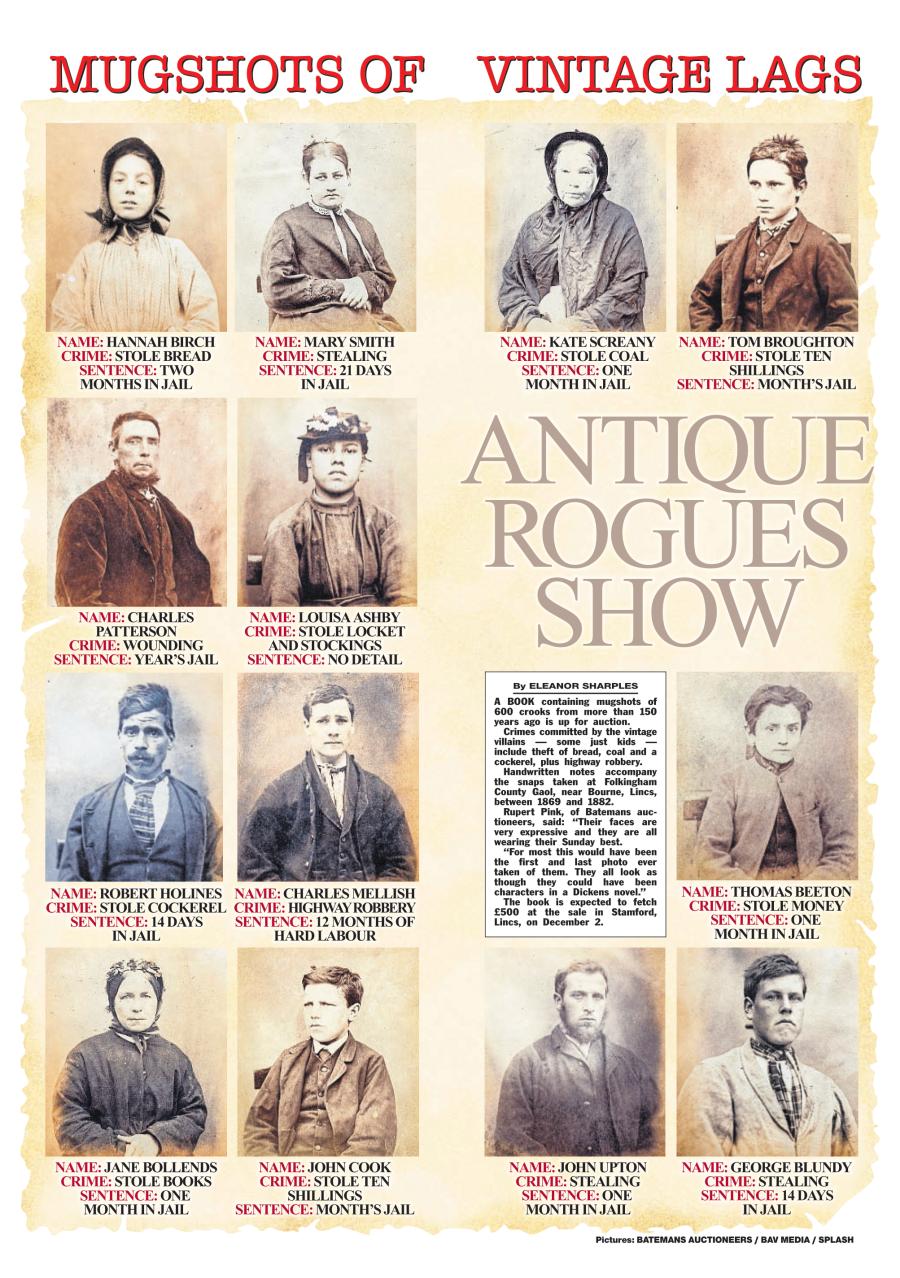The 600 vintage portraits of thieves, sheeprustlers, poachers, vandals and even a highwayman, were snapped in Folkingham County Gaol, near Bourne, in Lincolnshire between 1869 and 1882 - and are accompanied by hand-scrawled notes about their crimes.
It is the first time the haunting collection of Victorian photos, valued at £300-£500, has been seen in public after the private vendor put the book up for auction with Batemans Auctioneers of Stamford in Lincolnshire.
He found the fascinating custody shots in the 1970s after his father died and believes he acquired the book from Peterborough Prison where he started work as a police superintendent in 1930. Folkingham House of Correction, which could hold up to 70 offenders, operated from 1808 to 1878, when it is thought the remaining convicts were moved to Peterborough Prison.
The book is one of the UK’s earliest criminal databases and tells the story of petty crooks from days gone by, who look as though they have stepped straight out of a Dickens’ novel.
The process of taking mugshots was first utilised by Belgian officers in 1843, following photography's inception in 1800 by British inventor Thomas Wedgwood. Before this police relied on written descriptions. In the UK, the first crook was snapped by Birmingham police in 1853, but from 1869 it became the law with the introduction of The Habitual Criminals Act, which required prisons to maintain a register with photos to easily identify convicts.
The criminals, which include men, women and children, appear to have been mainly imprisoned for theft of food and clothes, as well as other offences such as arson, forgery and malicious wounding. Many are dressed in their Sunday best, despite being poor, and all are staring straight at the camera. The shots offer a rare insight into the working class of the late 19th Century, who were not often photographed.
Photographic portraits were expensive so the pictures which usually survive from this time are mainly of the gentry and middle classes who could afford them.
“I’ve never seen anything like it before. It’s a very exciting piece of social history and an incredible find as there are just so many photos in the book,” said Rupert Pink, a valuer and sales manager at Batemans. “It was previously kept by a family and now it has entered the public domain for the first time and they are keen to find a good home for it. The book shows photos of 600 people, who we wouldn’t otherwise know anything about as they would never normally have been photographed. For most this would have been the first and last photo ever taken of them."
“Their faces are very expressive and they are all wearing their Sunday best. The women are wearing hats and many of the men are wearing suits. They all look as though they could have been characters in a Dickens’ novel. In some of the photos you can even see the metal support rods by their necks to keep them looking forwards.”
Our Story Appeared In



